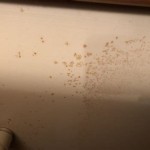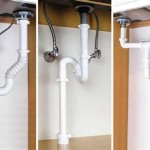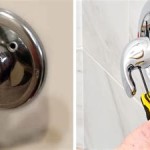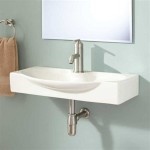How to Remove and Clean a Bathroom Vent
Maintaining a clean and functional bathroom vent is essential for proper ventilation, moisture control, and overall indoor air quality. Over time, bathroom vents accumulate dust, debris, and mold, hindering their performance and potentially contributing to health problems. This guide provides a comprehensive overview of how to safely and effectively remove and clean a bathroom vent, ensuring optimal performance and a healthier bathroom environment.
Before commencing any work, it is paramount to prioritize safety. Ensure the power to the bathroom vent fan is switched off at the circuit breaker. This prevents accidental electrical shock during the removal and cleaning process. Additionally, wearing appropriate personal protective equipment is recommended. This includes safety glasses to protect the eyes from falling debris and a dust mask or respirator to avoid inhaling dust particles and mold spores.
Gather the necessary tools and cleaning supplies. These typically include a stepladder, screwdriver (matching the vent cover screws), vacuum cleaner with a hose attachment, soft brush, cleaning solution (mild soap and water or a specialized bathroom cleaner), and a clean cloth or paper towels. Having these items readily available streamlines the cleaning process and minimizes disruptions.
Key Point 1: Removing the Vent Cover
The first step is to carefully remove the vent cover. The method for removal depends on the specific type of vent cover installed. Most covers are held in place by screws or spring clips. If screws are present, use the appropriate screwdriver to loosen and remove them. Store the screws in a safe place to prevent loss. If the cover is held by spring clips, gently pull the cover downwards, applying even pressure to disengage the clips. Some covers may require a slight twisting motion to release them.
Once the cover is detached, carefully inspect it for any visible signs of damage, such as cracks or broken clips. If damage is present, consider replacing the cover to ensure proper functionality and aesthetics. Place the removed cover on a protected surface, such as a drop cloth or newspaper, to prevent scratching or damage during cleaning.
Examine the vent housing and surrounding area for an excessive buildup of dust or mold. This will provide an indication of the overall condition of the vent and the cleaning effort required. A heavy accumulation of dust and mold may necessitate more thorough cleaning procedures, including the use of specialized cleaning solutions and tools.
Prior to proceeding further, document the arrangement of any internal components, such as the fan or motor assembly. This can be done through photographs or sketches, which will serve as a reference during reassembly. Proper documentation ensures that all components are reinstalled correctly, maintaining the fan's optimal performance and preventing potential damage.
Some vent fans are designed with a removable fan motor assembly that easily detaches with a pinch or a quick twist. Others require that screws holding the fan in place be removed before it can be taken out. Check your user manual to see which approach is recommended for your fan model.
Key Point 2: Cleaning the Vent Cover and Fan Components
With the vent cover removed, the next step is to clean the cover and any accessible fan components. Begin by vacuuming the vent cover to remove loose dust and debris. Use the hose attachment to reach any crevices or intricate designs on the cover. After vacuuming, wash the cover with a mild soap and water solution. Use a soft brush or cloth to gently scrub away any remaining dirt or grime. Rinse the cover thoroughly with clean water and allow it to air dry completely before reinstallation.
If the vent cover has stubborn stains or mold growth, consider using a specialized bathroom cleaner or a diluted bleach solution. Always follow the manufacturer's instructions and take appropriate safety precautions when using chemical cleaners. Wear gloves to protect the skin and ensure adequate ventilation to prevent inhalation of fumes. Thoroughly rinse the cover after cleaning to remove any residue from the cleaning solution.
For accessible fan blades, use a soft brush or cloth to gently remove any accumulated dust. Avoid using excessive force, as this may damage the fan blades or motor. If the fan blades are heavily soiled, consider using a damp cloth to wipe them clean. Ensure the blades are completely dry before reassembling the vent. Consider removing the motor or fan assembly if it can be done safely and easily. Clean the motor housing carefully, taking care not to get any water or cleaning solution inside the motor itself.
The interior of the vent housing should also be thoroughly cleaned. Use the vacuum cleaner with the hose attachment to remove any loose dust and debris. A soft brush can be used to dislodge stubborn dirt or grime. If necessary, wipe down the interior surfaces with a damp cloth and a mild cleaning solution. Ensure the interior is completely dry before reassembling the vent.
Pay particular attention to areas prone to mold growth, such as the corners and edges of the vent housing. If mold is present, use a mold-killing cleaner or a diluted bleach solution to disinfect the affected areas. Allow the cleaner to dwell for the recommended time before wiping it away. Ensure the area is thoroughly dry to prevent further mold growth.
Key Point 3: Reassembling and Testing the Vent
Once all components are cleaned and dried, it is time to reassemble the vent. Refer to the photographs or sketches taken during disassembly to ensure that all components are reinstalled correctly. If the fan motor assembly was removed, reattach it carefully, ensuring it is securely in place. If necessary, re-screw the fan into place. Double-check all connections to ensure proper alignment and secure attachment.
Carefully position the vent cover and align it with the mounting holes. If screws were used to secure the cover, reinsert and tighten them. Avoid overtightening the screws, as this may damage the cover or the surrounding structure. If spring clips were used, gently push the cover upwards until the clips engage. Ensure the cover is securely attached and flush with the ceiling or wall.
After reassembling the vent, restore power to the bathroom vent fan at the circuit breaker. Turn on the fan and listen for any unusual noises or vibrations. A properly functioning fan should operate quietly and smoothly. If any issues are detected, such as excessive noise or inadequate airflow, further troubleshooting may be required.
Inspect the airflow from the vent to ensure that it is effectively removing moisture and odors from the bathroom. Place a tissue or a small piece of paper near the vent to verify that it is being drawn upwards by the fan's suction. If the airflow is weak or nonexistent, check for any obstructions in the vent duct or fan motor. A clogged duct or a malfunctioning fan motor may require professional repair or replacement.
Regularly inspecting and cleaning the bathroom vent, ideally every six months to a year, will help maintain its performance and prevent the buildup of dust, debris, and mold. This proactive approach ensures proper ventilation, minimizes moisture accumulation, and promotes a healthier bathroom environment. Consistent cleaning also extends the lifespan of the vent fan, reducing the need for costly repairs or replacements.
If the vent fan continues to make rattling or grinding sounds, this can be a sign of a worn-out motor. In this case, the whole fan or just the motor assembly may need to be replaced. Some fan models make it easy to simply replace the fan and motor assembly, without having to rewire or cut into the ceiling drywall. Consult the manufacturer of your fan for specific instructions.

How To Clean A Bathroom Exhaust Fan Practically Functional

How To Clean Bathroom Exhaust Fan Duct Ace Sydney Electricians

How To Remove Clean Bathroom Ceiling Fan Nutone

How To Clean A Bathroom Exhaust Fan Practically Functional

How To Clean Bathroom Exhaust Fan

How To Clean A Bathroom Extractor Fan Technical Guides Heatandplumb Com

Three Simple Steps To Clean Your Bathroom Exhaust Fan Bond Cleaningin Wollongong

How To Clean A Bathroom Exhaust Fan Practically Functional

How To Clean A Bathroom Exhaust Fan Practically Functional

How To Clean Bathroom Ceiling Fans Simple Method
Related Posts







